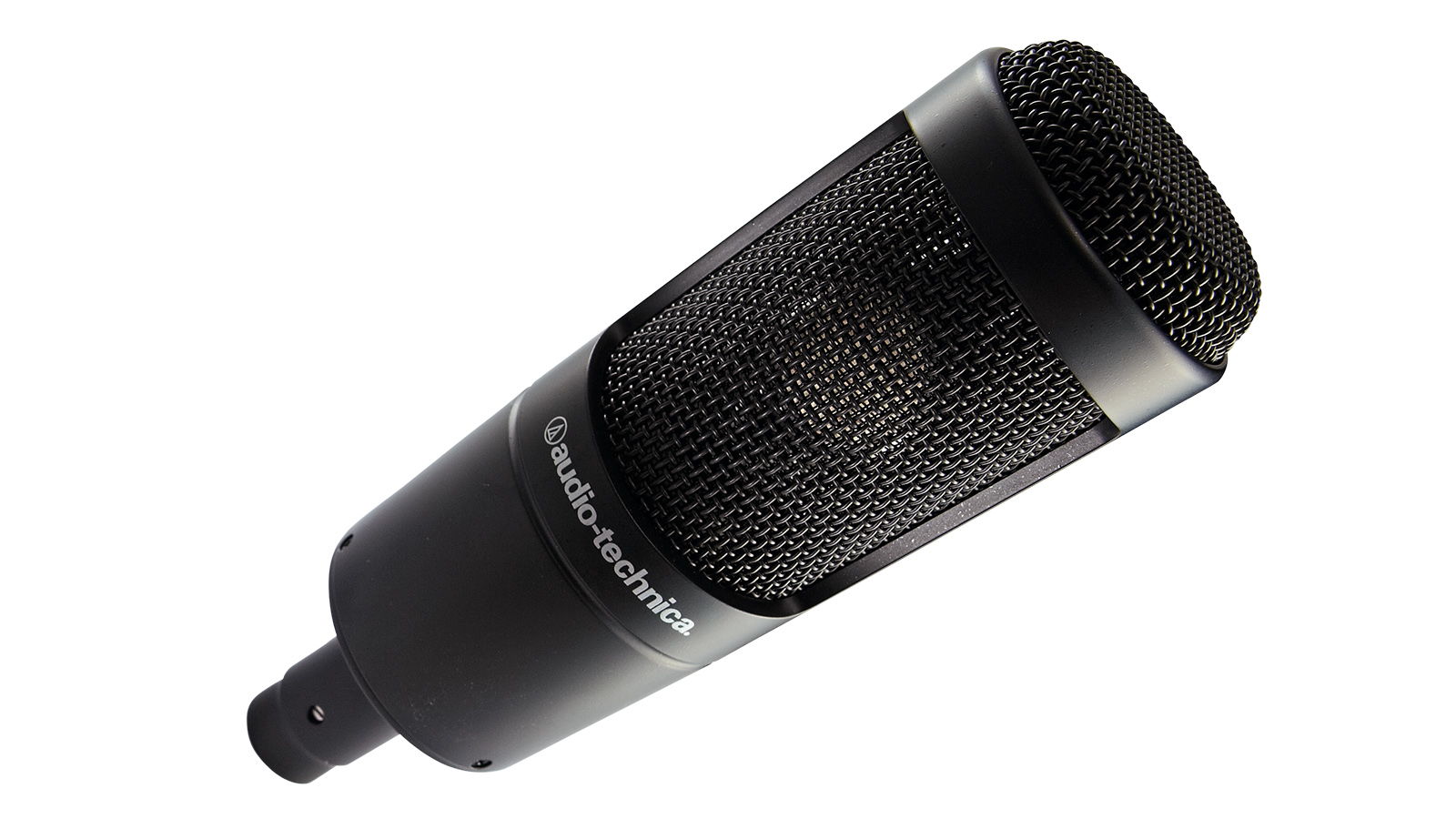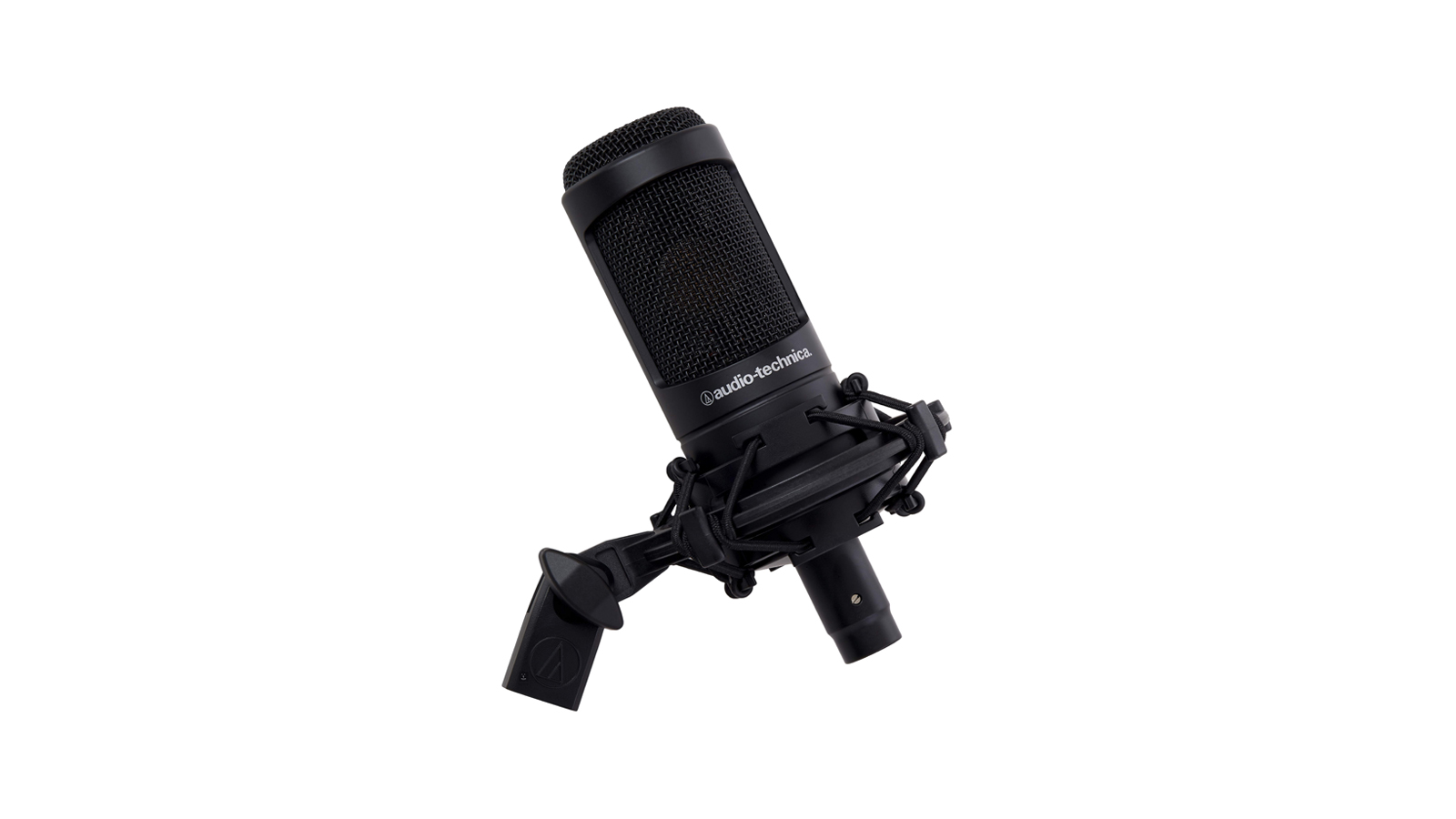MusicRadar Verdict
For recording vocals, guitars and even drums on a budget, the Audio-Technica AT2035 is still, to this day, one of the easiest mics to recommend. It delivers versatility, solid construction and great sounds at a price anyone can afford.
Pros
- +
Superb value
- +
Easy to use
- +
Suitable for vocals and instruments
- +
Tolerant of loud sources
- +
Includes shock mount
Cons
- -
Competition is fiercer than ever at this price bracket
- -
Single polar pattern reduces versatility somewhat
MusicRadar's got your back
What is it?
It seems recently the entry-level bracket of the large diaphragm condenser microphone market has exploded. Admittedly, this is perhaps down to the growth of streaming and podcasting, hence why most new models offer USB connectivity, either alongside or instead of the traditional XLR connection. But is there still a place for XLR-only condenser mics like the Audio-Technica AT2035, geared towards the home studio market?
You bet there is. Not everybody wants to sacrifice a valuable USB slot to a microphone, plus if it’s purely for music or audio production, the chances are you’ll be using an audio interface anyway making the USB functionality moot. Which brings us to our Audio-Technica AT2035 review.
The AT2035 has been around for a while now, yet retains a respected position thanks to its simplicity, decent audio quality and robust design. Its basic cardioid polar pattern and minimal features may, on paper, make it look limited but in practice it’s a highly versatile little mic. Often, for smaller home setups, there’s only really scope for one mic in a collection so versatility scores highly among a lot of users.
In this article we’ll go deeper into some of the AT2035’s features and potential uses, and explain why for many home studio owners this could become one of the most used mics in your collection. Whether you’re doing vocals, acoustic instruments, drums or a bit of everything, the AT2035 has you covered. As we said in the intro though, competition is fierce around the £/$150 mark, so does the AT2035 still cut it? Let’s take a look.
- Elevate your voice with the best vocal mics
- Explore the best podcasting microphones for all budgets
- Plug and play with the best USB microphones
Performance and verdict




The Audio-Technica AT2035 has been designed purely for home and project studios, rather than being pitched as a plug and play ‘do everything’ mic for streamers, podcasters and videographers who don’t want the hassle of needing extra equipment. While there’s nothing stopping them from using it - and it would perform admirably - the lack of certain features like USB connectivity and a limited polar pattern might mean there are better options out there. If, on the other hand, your studio comprises a decent audio interface, mixer, or hybrid system then there are few better options at this price point.
What you’re getting is a side-address, large diaphragm condenser mic with a cardioid polar pattern which will meet the needs of a wide variety of different applications in the studio. For speech tasks, the cardioid pickup does a tremendous job at rejecting ambient noise from outside its remit, making it ideal for vocals and the spoken word where the switchable high pass filter allows you to remove - or at least reduce - unwanted rumbling or other noises. On the other hand, the 10 dB pad means it can handle the kinds of noise you’d normally turn to a dynamic mic for but, crucially, it retains the extra detail and nuance you’d expect from a condenser.

Rode NT1A
SE Electronics 2200a II
AKG C214
The AT2035 features a back electret design, meaning there’s a permanent charge held within the mic itself. This is a cost-effective choice made by Audio-Technica, and mirrors the same tech used in smartphones and other electronic devices which aren’t geared towards providing the sufficient voltage to polarize the mic’s capsule. In days gone by, electret mics were seen as the cheap mic relation of ‘true’ condensers however that doesn’t hold water nowadays. So, while the AT2035 does require phantom power, it has a broader tolerance than an externally polarized condenser, adding to its versatility and reducing the need for higher spec equipment to operate it.
Want all the hottest music and gear news, reviews, deals, features and more, direct to your inbox? Sign up here.
We were impressed by the AT2035’s tolerance of louder volume levels too. Kick drums, often better serviced with a dynamic mic, produced a nice thump when we used the AT2035, and it was equally adept with loud guitar cabinets, especially when used in conjunction with a dynamic mic. Placed slightly off-axis, the natural detail captured by the AT complemented the broader dynamic response of our Shure SM57 to create a rich, rounded tone full of harmonics. For guitarists recording on a budget, the combination of these two mics will deliver outstanding results.

The AT2035 sits in the middle of the AT range. Below it sits the AT2020, which isn’t as deft at capturing louder sounds, while the AT2050 adds in extra polar patterns which increase its versatility somewhat. The AT2035 is also available as part of a bundle (called the Audio-Technica AT2035PK) comprising the mic, an adjustable boom arm and the ATH-M20x studio headphones, so it’s ideal for basic home studio setups, and the included shock mount is a nice touch.
In summary; while there are more expensive condenser mics out there that will deliver specific tones or colouration, as an inexpensive way of upgrading your home studio or simply adding a condenser to the ranks, the Audio-Technica AT2035 is a solid choice and one we are happy to recommend.
Hands-on demos
Podcastage
Screenbite
Sound Speeds
Specifications
- Type: Condenser
- Frequency response: 20 to 20,000 Hz
- Polar pattern: Cardioid
- Phantom power: 11-52V DC
- Noise: 12 dB SPL
- Switches: High pass filter, 10dB pad
- Connection: 3-pin XLR
- Weight: 403g
- Contact: Audio-Technica
Chris Corfield is a journalist with over 12 years of experience writing for some of the music world's biggest brands including Orange Amplification, MusicRadar, Guitar World, Total Guitar and Dawsons Music. Chris loves getting nerdy about everything from guitar and bass gear, to synths, microphones, DJ gear and music production hardware.

